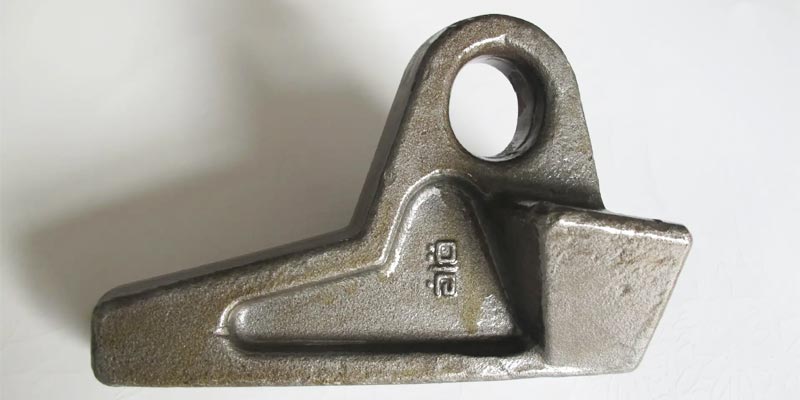- Contact Innally, Let you purchase forgings in China more favorable prices, products more assured!
- Hotline:+(86)15038323776 Email:innally@innally.com
Manufacturing process of aircraft forgings
- Category: Aluminium alloy forging, Metal forging
- |
- Date: 05/10/2023
The manufacturing process of aircraft forgings is a complex and precise process, which requires strict control of the parameters and quality of each link. In actual manufacturing, enterprises need to choose the right forging method and process parameters according to product requirements and material characteristics to ensure the quality and performance of forgings.
Product Details
Aircraft forgings are key components in aircraft structure, whose quality and performance directly affect the safety and service life of aircraft. In this paper, the manufacturing process of aircraft forgings will be introduced in detail from the aspects of manufacturing process, key technology and manufacturing examples.
- Manufacturing process
Raw material selection: The manufacturing of aircraft forgings first needs to choose high-quality raw materials, usually aluminum alloy, titanium alloy, nickel alloy and other high-strength, corrosion-resistant, high-temperature materials.
Smelting: The selected raw materials will be smelted to obtain alloy ingot that meets the requirements. In the melting process, temperature, composition and other parameters need to be controlled to ensure the quality and performance of the alloy ingot.

Forging: The alloy ingot is heated to a suitable temperature for forging. The forging process needs to control the temperature, deformation and other parameters to ensure the quality and performance of the forging. Forging can use hot forging, warm forging, cold forging and other different methods, the specific choice depends on the material characteristics and product requirements.
Heat treatment: After forging is completed, the forging needs to be heat treated to improve its structure and properties. In the heat treatment process, temperature, time and other parameters need to be controlled to ensure the quality and performance of the forging.
Machining: After the heat treatment is completed, the forging is machined to meet the product requirements and shape and dimension accuracy. During machining, parameters such as cutting speed and feed rate need to be controlled to ensure machining quality and efficiency. Quality testing: The final quality testing of forgings, including non-destructive testing, chemical composition analysis, mechanical properties testing, etc., to ensure that the forgings meet the relevant standards and requirements.
- Key technologies
Hot forging: Hot forging is the method of forging alloy ingot heated to the appropriate temperature. Hot forging can improve the plasticity and deformation ability of materials, and is beneficial to achieve large deformation and complex shape forging.
Warm forging: Warm forging is a method of forging alloy ingot heated to a lower temperature. Warm forging can reduce the deformation resistance of materials, which is conducive to realizing precision forging and improving production efficiency.
Cold forging: Cold forging is a method of forging materials at room temperature or lower temperatures. Cold forging can improve the strength and hardness of materials, which is conducive to achieving high precision and high surface quality forging. 3. Manufacturing examples
Taking the turbine disc of an aircraft engine as an example, the manufacturing process of aircraft forgings is introduced.
Selection of raw materials: The selection of high strength, high temperature resistant titanium alloy as raw materials.
Smelting: The titanium alloy raw materials are melted to obtain titanium alloy ingot that meets the requirements.
Forging: The titanium alloy ingot is heated to the appropriate temperature for hot forging. In the process of forging, the preliminary shape of turbine disk is obtained by combining multi-directional forging and die forging.
Heat treatment: After forging is completed, the turbine disc is heat treated to improve its structure and properties. In the heat treatment process, the combination of solution treatment and aging treatment is used to obtain the required strength and toughness.
Machining: After the heat treatment is completed, the turbine disk is machined to meet the product requirements and shape and dimension accuracy. High precision equipment such as CNC milling machine and grinding machine are used in machining process to obtain the required surface quality and shape and dimension accuracy.
Quality testing: Finally, the quality testing of the turbine disk is carried out, including non-destructive testing, chemical composition analysis, mechanical property testing, etc., to ensure that the turbine disk meets the relevant standards and requirements.
The manufacturing process of aircraft forgings is a complex and precise process, which requires strict control of the parameters and quality of each link. In actual manufacturing, enterprises need to choose the right forging method and process parameters according to product requirements and material characteristics to ensure the quality and performance of forgings. At the same time, strengthening technology research and development and improving production efficiency are also important development directions for aircraft forging manufacturing enterprises.
nannan
INNALLY mainly provides you with various types of cast and forged parts products. Welcome your inquiries! innally@innally.com
Related Products
Search
Forging center
- Steel forgings
- Aluminium alloy forging
- Titanium alloy forging
- Stainless steel forging
- Copper forging
- Automotive forgings
- Locomotive forging
- Bicycle forgings
- Motorcycle forging
- Rigging and fasteners
- Bearing forging
- Electric power fittings
- Marine forging
- Mechanical forgings for metalworking
- Mining machinery forgings
- Marine engineering forgings
- Construction machinery forgings
Popular product

© 2025. All Rights Reserved.






